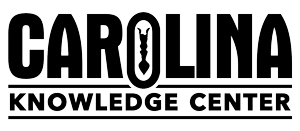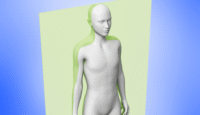The whys
Teachers in all disciplines are constantly encouraged (or directed) to have their students write in the content area. Science educators are able to integrate the writing needs of students into their laboratory reports. I find that students’ usual laboratory activities include guided questions with some calculations and analysis questions. They often answer these questions with 1 word, simple sentences, or short phrases. More and more frequently, I see students answer the questions in the format of text messages, even including emoticons in their answers. Students who answer questions in this manner often have difficulty synthesizing more complex concepts, evaluating data and observations, and expanding their knowledge and science creativity through laboratory activities.
The hows
I found that the key to students’ writing successful laboratory reports is giving them a format they can follow throughout the course. This format easily adapts to any science discipline.
At the beginning of the school year, I do a simple laboratory activity with my students. Any introductory activity that is appropriate for your subject works. For example, in chemistry we complete a simple lab observing the reaction between aluminum foil and copper II chloride. In biology, we complete an activity observing the difference between “living” and “non-living.”
I reserve the computer room for the next laboratory period. (If you are among the fortunate with computers in your room, you might do this in the second half of the class.) I have my students set up the following laboratory-report format electronically, and then save the file. I find this format useful for almost any activity, although sometimes with a little tweaking to customize it for an activity. Students also save the file on a thumb drive or e-mail it to themselves as an attachment to use on their home computers.
The lab-report format
Lab #_______ Title_______________________________________
Aim:
Hypothesis:
Materials:
Method:
Observations:
Data:
Calculations and Analysis:
Graphs:
Conclusion:
R
E
R
U
N
Students write their first lab report as a class activity in the computer lab. Most students complete the laboratory report with no trouble, except for hitting a roadblock at the conclusion. I found the “RERUN” conclusion gives them the format and guided instruction needed for success.
The explanation of format terms
Below I briefly fill in the headings with what I expect the students to do.
Aim: Statement of what they will be learning–“To be able to . . .”
Hypothesis: Educated guess including the student’s expected results.
Materials: List of materials, chemicals, and safety equipment.
Method: Summary, recorded either in a numbered or bulleted list, of what was done in the activity. Note: For activities too complex to write about concisely, just tell students what to include.
Observations: Statements, often in chart form, describing their observations.
Data: Record of all measurements (also often in chart form) with labeling of all units required.
Calculations and Analysis: Record of all formulas and units (when appropriate).
Graphs: Graphical depictions on graph paper or in Excel (which to use depends on the lab, but since both skills are essential, I try to vary assignments between them).
Conclusion
Restate—the aim.
Explain—(briefly) what you did.
Results—state them, including whether or not your hypothesis was proven.
Uncertainties—determine percent error for calculations and give reasons for error. If no calculations, state what did not go as you expected and why.
New Information—define (teacher-provided) new vocabulary terms or state 2 or 3 new things learned in this activity.
The summation of the activity
After students perform several activities, completing the laboratory report becomes automatic. I collect the lab report with the activity pages and grade them as a single activity. I believe I’m helping students become better writers and scientists as they think and write about their science activities.
Article written by Susan Lustig, a Carolina Teaching Partner.




